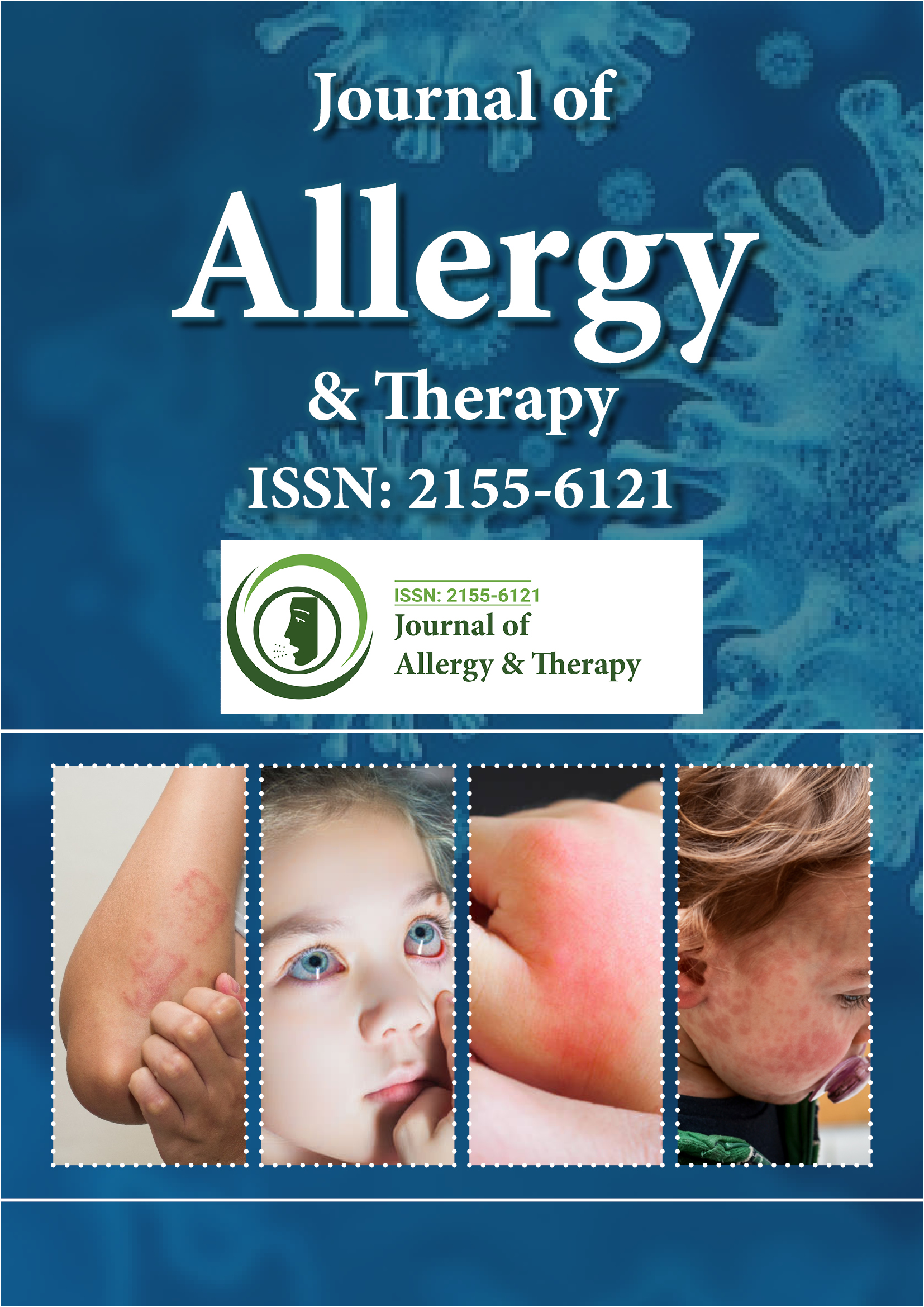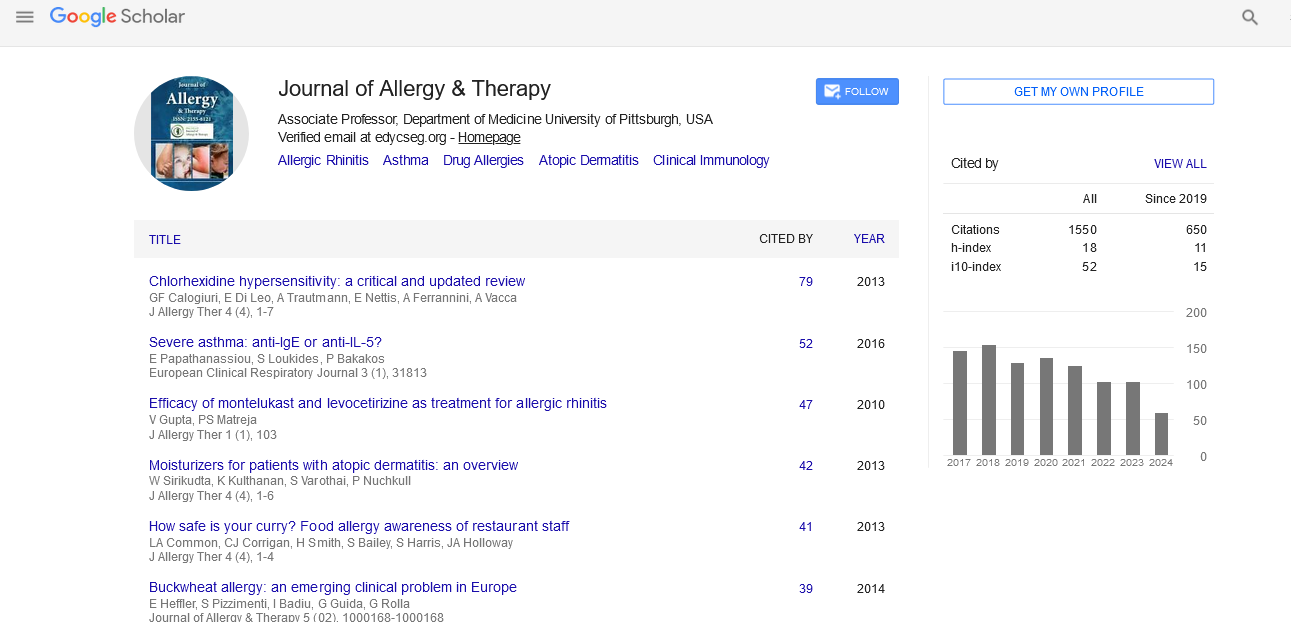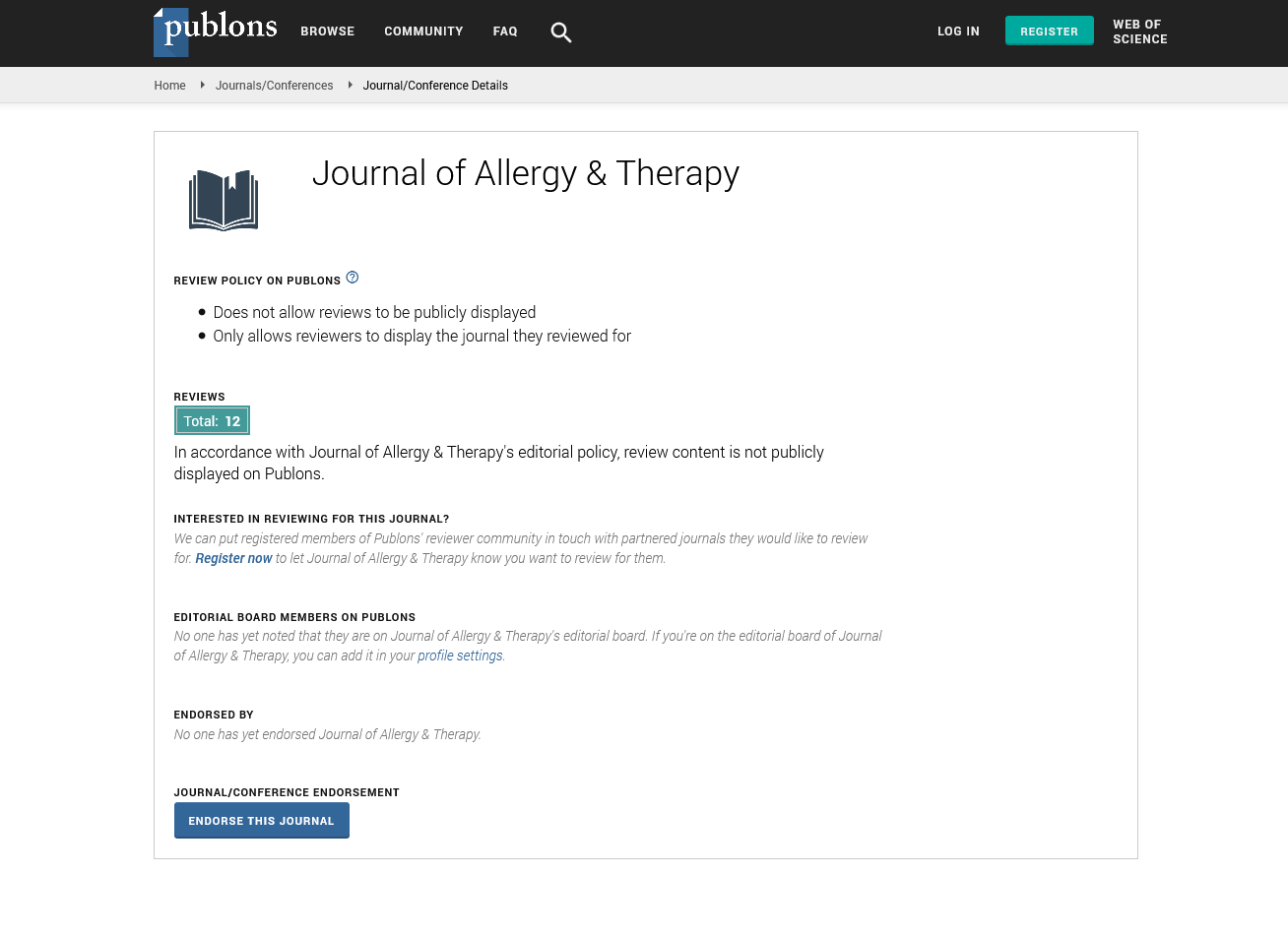Indexed In
- Academic Journals Database
- Open J Gate
- Genamics JournalSeek
- Academic Keys
- JournalTOCs
- China National Knowledge Infrastructure (CNKI)
- Ulrich's Periodicals Directory
- Electronic Journals Library
- RefSeek
- Hamdard University
- EBSCO A-Z
- OCLC- WorldCat
- SWB online catalog
- Virtual Library of Biology (vifabio)
- Publons
- Geneva Foundation for Medical Education and Research
- Euro Pub
- Google Scholar
Useful Links
Share This Page
Journal Flyer

Open Access Journals
- Agri and Aquaculture
- Biochemistry
- Bioinformatics & Systems Biology
- Business & Management
- Chemistry
- Clinical Sciences
- Engineering
- Food & Nutrition
- General Science
- Genetics & Molecular Biology
- Immunology & Microbiology
- Medical Sciences
- Neuroscience & Psychology
- Nursing & Health Care
- Pharmaceutical Sciences
Commentary - (2022) Volume 13, Issue 7
The Effectiveness and Safety of Allergy Immunotherapy Premedication
Athauda Fischer*Received: 04-Jul-2022, Manuscript No. JAT-22-17737; Editor assigned: 07-Jul-2022, Pre QC No. JAT-22-17737 (PQ); Reviewed: 22-Jul-2022, QC No. JAT-22-17737; Revised: 01-Aug-2022, Manuscript No. JAT-22-17737 (R); Published: 08-Aug-2022, DOI: 10.35248/2155-6121.22.13.294
Description
The only viable disease-modifying therapy for allergic disorders is Allergen Immunotherapy (AIT). Regular administration of increasing doses of the sensitising allergen up to the desired maintenance dose is the standard course of action for AIT. When a patient with allergies is challenged with a particular allergen once more, AIT tries to produce Sustained Unresponsiveness (SU). AIT involves administering the allergen via several ways, such as Oral Immunotherapy (OIT), subcutaneous immunotherapy, and Sublingual Immunotherapy (SLIT). Additionally, AIT can be provided in accordance with various up-dosing regimens, and is divided into conventional, cluster, and rush immunotherapies, then latter two are expedited forms of immunotherapy that involve shorter treatment periods.
Antihistamine prescriptions prior to AIT could be a substitute to increase the safety of AIT. Rush procedures in SCIT and, to a lesser extent, cluster protocols in OIT, have typically been used in research reporting premedication. Premedication in SLIT has not yet been documented in any studies. Premedication is typically advised one to two hours prior to the first dose of AIT of the day. However, there is currently no agreement on how antihistamine premedication affects the improvement in AIT safety. Although premedication with an antihistamine does not completely eliminate the risk of other SRs, it does reduce the frequency and severity of local and systemic cutaneous reactions.
Similar to this, premedication with an antihistamine is advised by the European Academy of Allergy and Clinical Immunology (EAACI) Guidelines on AIT for Hymenoptera Venom Allergy since it can enhance the tolerance of venom immunotherapy and reduce significant LRs, as well as to some extent also systemic AEs. However, there is still a lack of data supporting the use of antihistamines prior to AIT for allergic asthma and food allergy caused by House Dust Mites (HDM). However, it is yet unknown whether antihistamines can affect how well AIT works. In order to ascertain whether these medications may help to increase the safety and effectiveness of AIT, we performed a meta-analysis of studies involving premedication with antihistamines.
According to a meta-analysis, allergen immunotherapy can lessen the severity of allergic asthma's immediate symptoms, but it also slightly raises the risk of both systemic and local responses. When grass/birch pollen causes moderate to severe allergic rhinitis in children and adolescents, a 3-year course of sublingual or subcutaneous immunotherapy can prevent asthma for up to 2 years. Future treatments are encouraged by recent developments in our understanding of the mechanism and long-term effects of immunotherapy. Additionally, new techniques are being developed to enhance security and reduce the danger of serious adverse allergic reactions when receiving immunotherapy. Allergoids, Recombinant Allergens (RecA), and modifiedrecombinant allergens are some of the more recent allergy preparations on the market (RecA).
Studies on virus-like particles, CpG motifs, MPL adjuvants, and aluminium hydroxide have demonstrated that they can improve safety and efficacy by enhancing the immune response. Applying extract patches to the skin or injecting lymph nodes into the inguinal region are two additional more recent methods of allergen immunotherapy. Additionally, recombinant technologies or chemicals may change allergen molecules to make them less reactive, this may be because toll-like receptors are stimulated or Th2 responses are suppressed (approval is pending). The most recent developments in allergy immunotherapy not only offer disease-modifying therapies but also affordable treatments that enhance quality of life. Immunotherapy has historically been effective and safe, although it is still neglected.
Citation: Fischer A (2022) The Effectiveness and Safety of Allergy Immunotherapy Premedication. J Allergy Ther. 13:294.
Copyright: © 2022 Fischer A. This is an open access article distributed under the terms of the Creative Commons Attribution License, which permits unrestricted use, distribution, and reproduction in any medium, provided the original author and source are credited.


